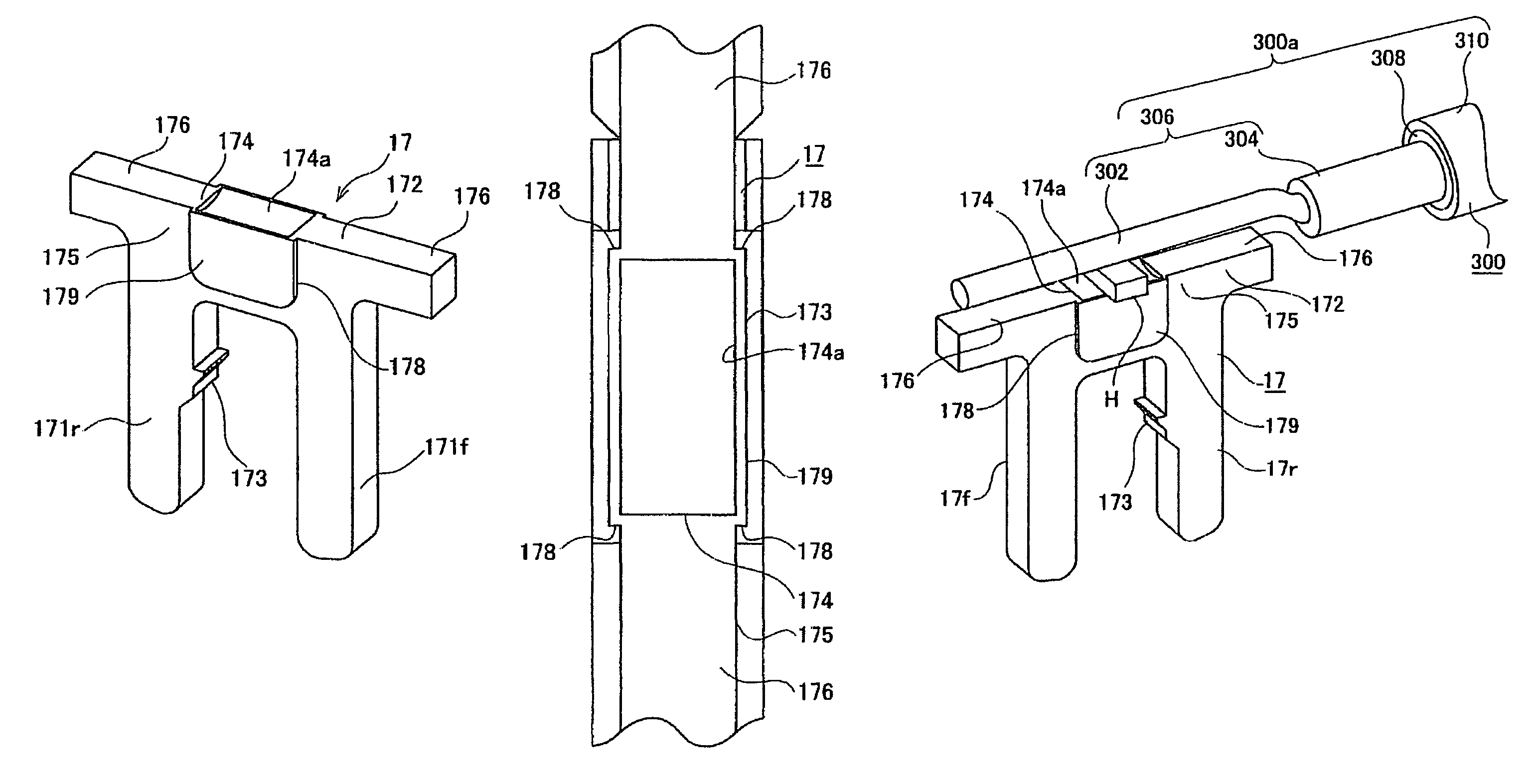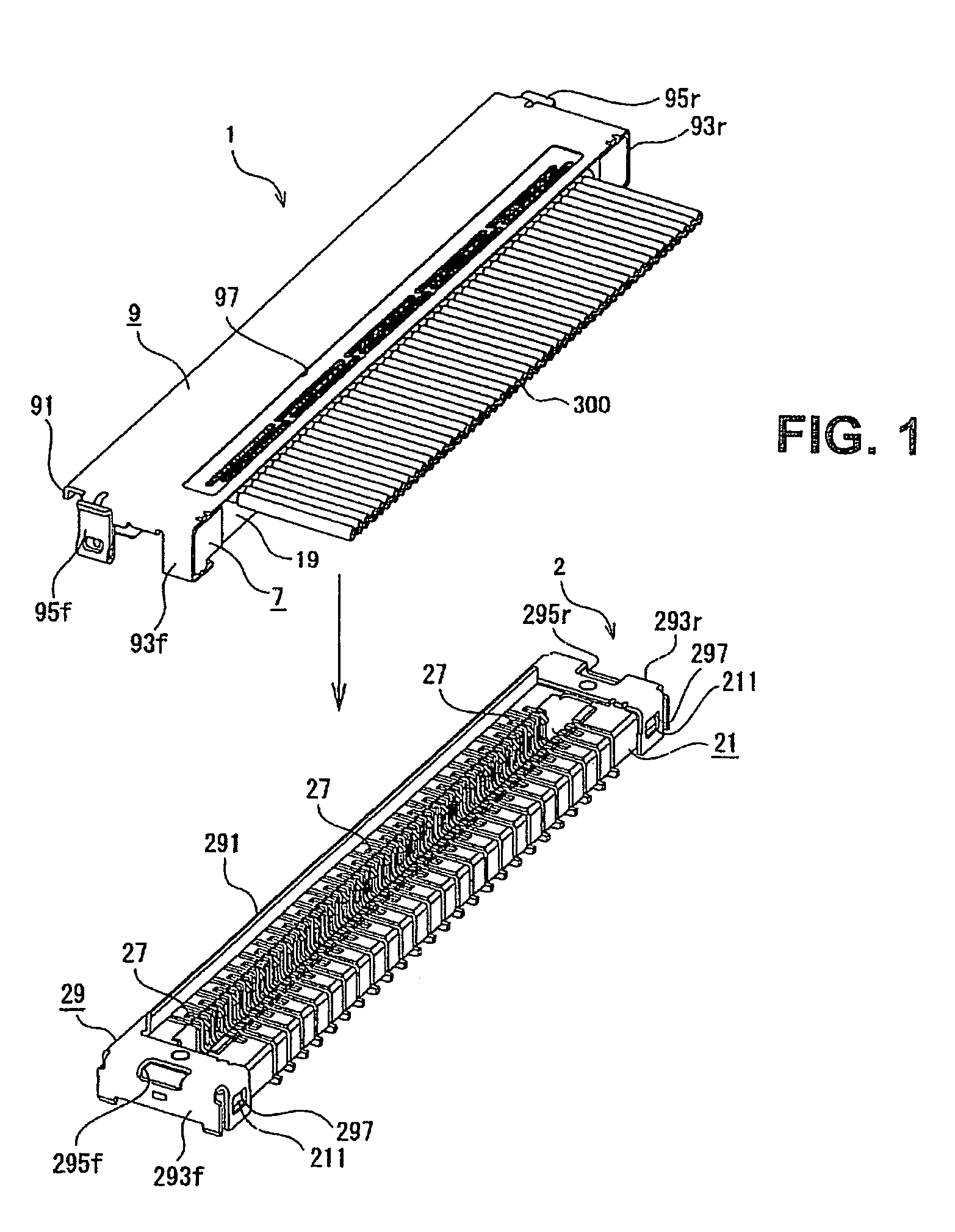Fine-pitch anti-wicking terminals and connectors using same
a terminal and fine pitch technology, applied in the direction of connections, electrical appliances, printed circuits, etc., can solve the problems of increasing contact resistance, small gap between the terminals, and space constraints, and achieve the effect of suppressing the flow of fused solder
- Summary
- Abstract
- Description
- Claims
- Application Information
AI Technical Summary
Benefits of technology
Problems solved by technology
Method used
Image
Examples
Embodiment Construction
[0052]As required, detailed embodiments of the present invention are disclosed herein; however, it is to be understood that the disclosed embodiments are merely exemplary of the invention, which may be embodied in various forms. Therefore, specific details disclosed herein are not to be interpreted as limiting, but merely as a basis for the claims and as a representative basis for teaching one skilled in the art to variously employ the present invention in virtually any appropriate manner.
[0053]FIG. 1 is a perspective view illustrating, together with a mating connector 2, a connector 1 according to the present invention in a state prior to its mounting to the mating connector 2. Further, FIG. 2 is a perspective view of the connector 1 as mated with the mating connector 2. It is to be noted that, although not shown in FIG. 2, the connector 1 is also attached to the other end portion of a coaxial cable 300 for mounting to the mating connector 2. FIG. 3 illustrates an example where the...
PUM
 Login to View More
Login to View More Abstract
Description
Claims
Application Information
 Login to View More
Login to View More - R&D
- Intellectual Property
- Life Sciences
- Materials
- Tech Scout
- Unparalleled Data Quality
- Higher Quality Content
- 60% Fewer Hallucinations
Browse by: Latest US Patents, China's latest patents, Technical Efficacy Thesaurus, Application Domain, Technology Topic, Popular Technical Reports.
© 2025 PatSnap. All rights reserved.Legal|Privacy policy|Modern Slavery Act Transparency Statement|Sitemap|About US| Contact US: help@patsnap.com



